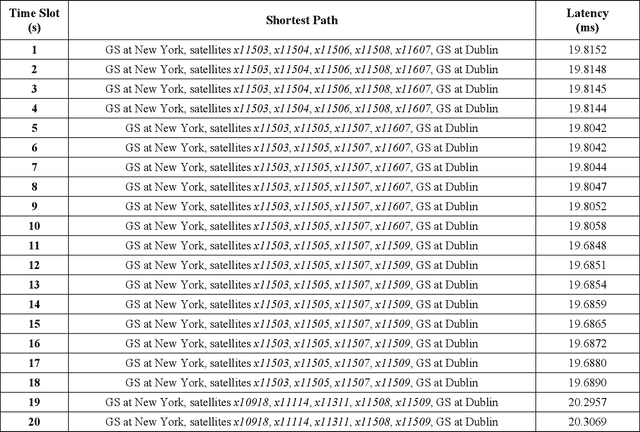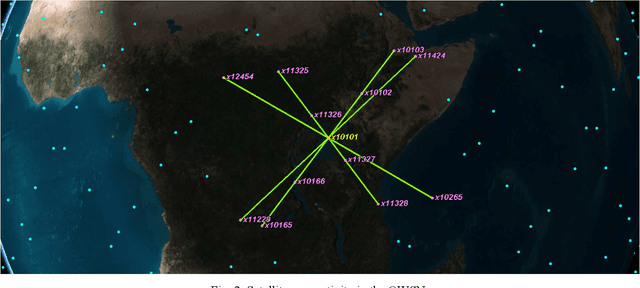Optical Wireless Satellite Networks versus Optical Fiber Terrestrial Networks: The Latency Perspective
Paper and Code
Jun 14, 2021



Formed by using laser inter-satellite links (LISLs) among satellites in upcoming low Earth orbit and very low Earth orbit satellite constellations, optical wireless satellite networks (OWSNs), also known as free-space optical satellite networks, can provide a better alternative to existing optical fiber terrestrial networks (OFTNs) for long-distance inter-continental data communications. The LISLs operate at the speed of light in vacuum in space, which gives OWSNs a crucial advantage over OFTNs in terms of latency. In this paper, we employ the satellite constellation for Phase I of Starlink and LISLs between satellites to simulate an OWSN. Then, we compare the network latency of this OWSN and the OFTN under three different scenarios for long-distance inter-continental data communications. The results show that the OWSN performs better than the OFTN in all scenarios. It is observed that the longer the length of the inter-continental connection between the source and the destination, the better the latency improvement offered by the OWSN compared to OFTN.
 Add to Chrome
Add to Chrome Add to Firefox
Add to Firefox Add to Edge
Add to Edge